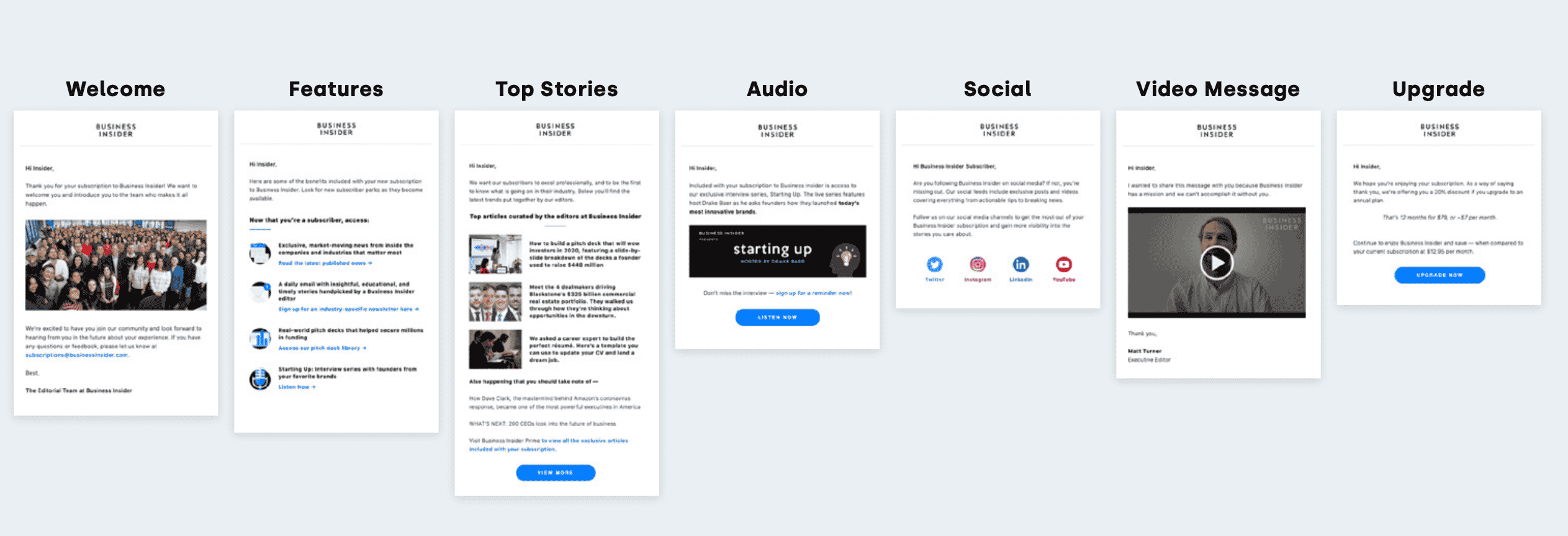Product & Customers
Email Newsletters, Changes in Reader Behavior and How the Two Work Together for BuzzFeed and Insider
December 7, 2020

Everything old is new again. Having once snubbed email for shiny new channels like social media, publishers once again see email newsletters’ incredible value. And why wouldn’t they? Email drives traffic and loyalty, while also providing publishers with first-party data on an owned channel. Throughout this year, people have become more engaged with email newsletters, too, generating 103% more revenue, according to LiveIntent data.
During our most recent Food for Thought webinar, brilliant marketers from Business Insider and BuzzFeed joined us to discuss email newsletters, changing audience behaviors and how the two go together.
How Insider Promotes Email Newsletters With Email Newsletters
Insider launched its first consumer subscription offering in 2017 and subsequently created 26 email newsletters. Some were free, some lived behind a paywall, and others had a “freemium” mix of the two, which created confusion. Rebranding earlier this year, Insider decided to take that further and overhaul its entire newsletter strategy.
That overhaul involved updating branding, consolidating newsletters and creating a robust new preference center to help readers keep them straight. There’s also a new six-point welcome series, which includes an email specifically about newsletters.

“The way we set up our newsletter algorithms previously, they weren’t specifically targeted by vertical even though that was the intention,” explains Ariel Cooper, Digital Marketing Manager of Consumer Subscriptions at Business Insider. “We wanted to eliminate all of that and put everything into one really good algorithm-driven newsletter that’s really tailored to our users’ preferences.”
Insider rolled out their onboarding series in June 2019 and it’s been performing really well. The onboarding has significantly increased auto-renewals, a key success metric. So, how does the team plan to keep that momentum going?
“We are constantly updating the onboarding series to showcase the newest features and benefits to our new subscribers,” says Maggie Anderson, Retention Marketing Manager at Business Insider. “With the recent relaunch of our app, we are also tailoring messages based on device. As our product grows, we want to ensure subscribers are onboarded as seamlessly as possible, which includes iterations of this flow based on different subscription types.”
What the Data Taught BuzzFeed About Reader Behavior
BuzzFeed distributes content with 45 email newsletters and newsletter courses. This year, viewing habits have shifted alongside “emotional endpoints,” as Benedict Leung, BuzzFeed’s Senior Manager of Audience Development, puts it. Spending more time at home, people have exhibited more interest in cooking-related content. From its extraordinarily popular Tasty newsletter, BuzzFeed has been seeing more engagement around experimental recipes, for example.
It’s important to dig into the data because people’s behaviors aren’t necessarily changing in the ways they think they are. “There’s an asymmetry of information where consumers tell us what they think they want, but the transactional data says otherwise,” says Benedict. “Why might that be the case? One hypothesis is that from a consumer perspective, people may not even realize they’re in the market for something, but they have a lot of trust in certain brands and influencers.”
BuzzFeed leaned into that data and launched Want This, an influencer-driven newsletter “personal diary.” It’s a new format, one centered on authentic product recommendations with a supporting small business tilt in mind.
“The recommendation here is to really think about ways you can build better trust, whether that’s leveraging creators or influencers, or thinking about new native formats,” adds Benedict.
The Food for Thought webinar series will be back in January. Visit our Community page to stay up to date.
The State of Brand Loyalty in the U.S. in 2023
Related



